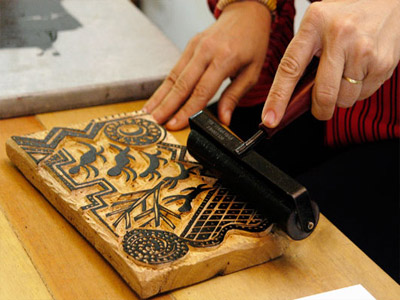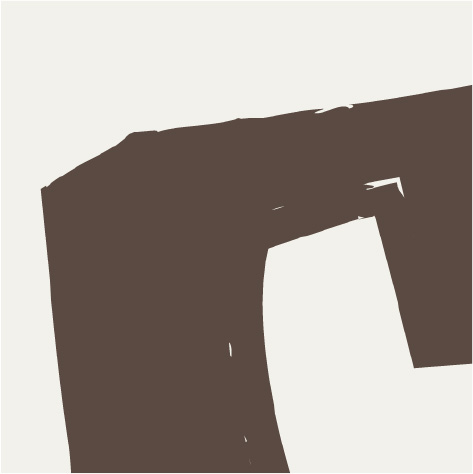Brand Positioning
The first step was to define the brand positioning, consisting of the key characteristics that define Sion as a business and set it apart in the segment. We conducted an interview with the company's founder and performed a comparative analysis of national and regional competitors. The main characteristics that were defined are as follows

- Well-made basics: emphasizing quality in preparation, ingredients, and focus. The menu offers a small variety of options with simple recipes.
- Accessible: creating a space and food that can be enjoyed by anyone, regardless of gender, age, or background.
- Communion and hospitality: providing a welcoming environment that encourages social interactions between friends and staff.
- Authenticity, originality, transparency : Sion stands out as a unique brand, showcasing its identity with clarity, honesty, and personality. The motto: "Here we eat with our hands.
Cultural References
In a second phase, with the main characteristics of the brand defined, a research for cultural influences that could be used in the creative stage was conducted. The name 'Sion' was inspired by a neighborhood in Belo Horizonte, which brought inspiration to define the main concept of the visual identity.




Belo Horizonte, nightlife, and "botecos"
Belo Horizonte is known as the 'national capital of botecos.' Botecos are establishments - usually small, popular, and accessible - that offer food and drinks such as snacks, beers, and cachaças. They are icons in Brazilian nightlife and culture.
Minas Gerais and the Brazilian popular culture
Minas is known for its popular culture, such as crafts, cuisine, and typical foods. The small towns in the interior have their economy marked mainly by small productions, trade, fairs, and restaurants.
Visual References
Based on the defined main concepts, we created a mood board with references to explore ways to visually translate them using letters, colors, and shapes. We also took inspiration from regional artisanal products and printing processes.






Woodcut printing
Woodcut printing is a rustic printing technique that uses wood as the matrix. By carving, a relief is created in the area to be printed. Then, ink is applied to the raised part, and a press is used to transfer the design onto paper. It became popular in the northeastern region of Brazil through the cordel literature.
Vernacular typography
Vernacular typography refers to all types of letters, facades, and posters produced in the streets, in everyday life, in shops, and by communities. As it is produced popularly, it reflects the local culture of a population, their habits, and beliefs. (ELLER, 2015)
Shapes
Vernacular typography is commonly found in signs in rural areas, where signage production is done manually. It is also found in souvenirs, mementos, and crafts sold in small shops in tourist cities.
The Logo
Finally, using the cultural and visual references, we began the creative process to achieve a solution that captured the defined characteristics of the brand. After an intensive process of sketching, selection, and refinement, the final logo was achieved, entirely handcrafted and digitally polished.




Details: Basics
The final form of the letters aimed to evoke a rustic and welcoming feel, while also reflecting a Brazilian identity, allowing the target audience to connect with it. It was equally important to maintain contrast and legibility in the design to ensure clear communication.

Straight bevels
Forms inspired by woodcut printing and Brazilian popular culture

Simple shapes
Letters designed with minimal lines and straightforward shapes

Incisions and cuts
Marks of artisanal materials and processes, resembling wood surfaces

Vernacular typography
Hand-drawn strokes seen in shops and markets, conveying a sense of community
Construction: well-made
While opting for straight and simple forms, the construction of each letter, the spacing between them, and the overall composition of the logo were carefully calculated to avoid overwhelming readability and maintain the image of a well-crafted product, visually translating the concept 'Well-made Basics"

Balanced proportions
Despite the manual construction, consistent thickness, spacing, and proportions were maintained.
Precise fit
Shapes carefully fit into a harmonious unity
Perception survey
With the final logo ready, we conducted a quick perception survey with 11 individuals close to us. Each person was asked to write down the three first words that came to mind when seeing the logo. They were also requested to evaluate the logo using a scale of 1 to 5 for each pair of opposite adjectives. The average of the responses for each pair represented a point on the scale below. The comparison between the black and orange lines represents how well the logo achieved the desired perception.
6x
Cool (3)
Fancy
Stylish (2)
Chic
3x
Relaxed
Casual
Informal
3x
Light
Calm (2)
2x
Modern (2)
Simple / Basic
Attractive / Beautiful
Pleasant / Familiar
Innovative / Unique
Others
rustic, wooden, backcountry, artisanal, northeastern, joyful, sweet, youthful, popular, contemporary
Visual Identity
After validating the logo, we proceeded with the development of the visual identity, which comprised typography, color palette, and supporting elements. The goal of the visual identity was to highlight the characteristics that were not fully perceived in the logo and expand the visual communication for all physical and digital mediums.
Institutional Typography
The selected letters were inspired by cordel literature and Brazilian vernacular typography, combining popular culture with the warm hospitality of Minas Gerais. On the other hand, the typography used in paragraphs was kept simpler.
Titles
Subtitles
Paragraphs
Color Palette
We chose warm and earthy colors, welcoming and connected to organic materials like wood and brick.
Highlight
Brick orange
RGB
245 / 135 / 60
CMYK
0 / 55 / 80 / 0
Base
Water green
RGB
140 / 155 / 145
CMYK
50 / 30 / 40 / 10
Medium Background
Earth beige
RGB
210 / 190 / 150
CMYK
20 / 25 / 45 / 5
Light Background
Paper white
RGB
235 / 240 / 230
CMYK
10 / 5 / 10 / 0
Dark Background
Wooden brown
RGB
90 / 75 / 65
CMYK
50 / 55 / 55 / 55
Supporting Elements
The supporting elements were developed to enhance the visual communication while also reinforcing the brand's characteristics.
Irregular boxes
As a highlighting feature, the irregular boxes reference vernacular typography.

BW Illustration
As ilustrações foram feitas através do tratamento de fotos para dar um aspecto mais manual.
Sketch texture
Using scribbles, we created textures to add a relaxed, free, and informal touch
Text interventions
To add more life and authenticity to the titles, we made interventions with underlines and arrows
Implementation and Outcome
With the final visual identity completed, we began the design process, followed by overseeing the graphic production of physical materials, including flyers, displays, uniforms, business cards, menus, placemats, packaging, and the store facade.









The space was designed by an architect with whom we maintained close contact to ensure that the identity and brand characteristics were present. The official inauguration was a success, and currently, Sion Burguer is one of the most popular burger joints in the southern Rio de Janeiro region.


